The full name of NFC refers to Near Field Communication technology. Based on the contactless Radio Frequency Identification technology (RFID), Near Field Communication technology offers a quite secure and quick way of communication for a variety of electronic items which is increasingly popularized in daily lives.
1. What is NFC Technology?
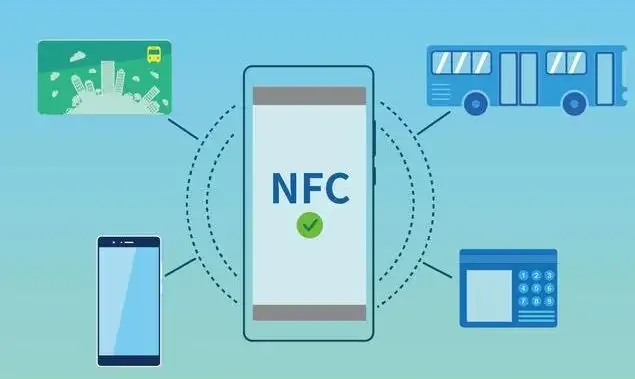
The “near field” in the Chinese name of Radio Frequency Identification technology stands for radio waves that are close to the electromagnetic fields. As a matter of fact, radio waves are the same as electromagnetic waves so it abides by the equations of Maxwell. That means during the process of the transformation from a transmitter antenna to a received antenna, the electric fields and the magnetic fields will always be alternated to conduct energy exchange. And they will be strengthened in the process of the exchange. For instance, the radio signals utilized in our cell phones are propagated and spread using this working principle, and this method is named Far-Field Communication. And within ten wave lengths of the electromagnetic wave, the electrical as well as the magnetic field are separated from each other. Then the electric field at this time doesn’t have much significance. However, the magnetic field can be utilized for short-range communication, and we call it Near Field Communication.
Combined with both near-field communication technology and mobile communication technologies, the Near Field communication service is able to fulfill a variety of roles including electronic payment, identity authentication, ticketing, data conversion, anti-counterfeiting as well as advertisement. Therefore, it is emerged kind of role in the mobile communication industry. The Near Field Communication service boosts the roles of a cell phone, which changes the users’ payment behavior to be increasingly moved towards the process of electronification, thus setting up a new kind of consumer consumption business mode.
2. How Does NFC(Near Field Communication) Work?
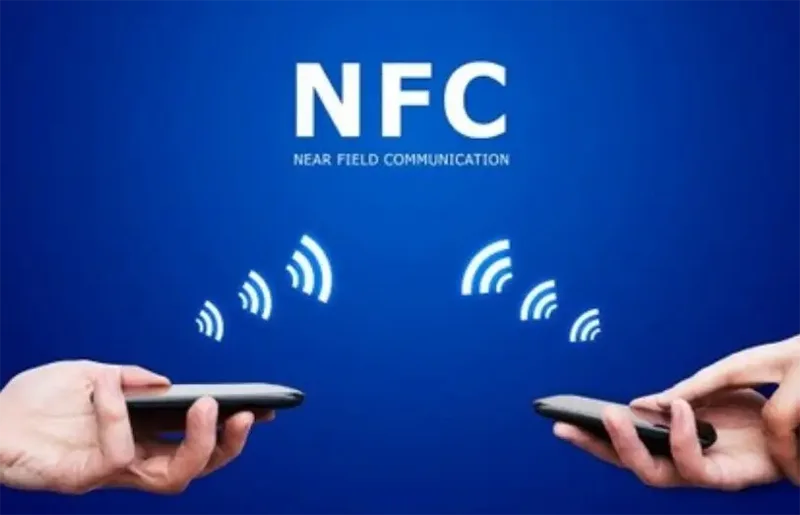
The Near Field Communication technology is capable of setting up the wireless network in a quick and automatic manner, offering a “virtual connection” for cellular, Bluetooth or WIFI devices to realize communication among them over a short distance, as well as making it suitable for communication among mobile devices, consumer electronics, personal computer and smart controlled components.
The communication of the Near Field Communication technology occurs between the initiating devices and the target devices, and any NFC devices can be either the initiating devices or the target devices. The two devices are coupled to each other by an Alternating Current magnetic field and one device transmits digital signals in the way of carrier modulation in ASK mode or FSK mode. The initiated equipment creates the radio frequency magnetic fields to launch (the modulation scheme, encoding, transmission speed and frame format of the Radio Frequency interface) while the target devices reply to the commands initiated by the initiated devices and choose the radio frequency magnetic fields initiated by the initiated devices or created by itself to achieve communication.
3. The application cases of the NFC technology
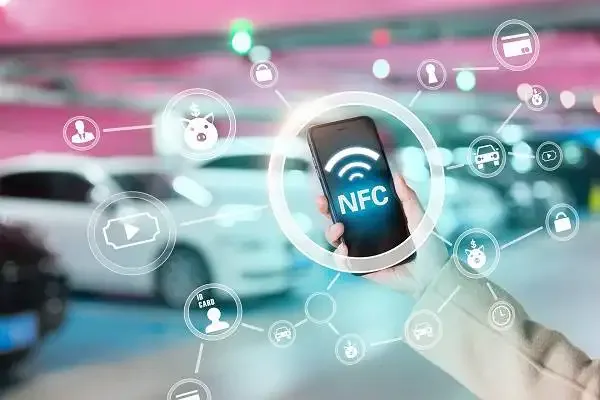
The application of the card model
The type of model can be applicable for contactless mobile payments including a shopping mall, transport means and any other applications. The users simply put the phones to be close to the card readers and then the users simply enter the passwords to ensure the transactions or gather them straightly. Examples involve access control, bus tickets, tickets, etc. The card is driven by the card readers and is able to be utilized properly if card-carrying devices are run under power.
The application of security protection
The applications of the Near Field Communication technology in security protection are mainly changing cell phones to access cards, electronic tickets and so on.
The virtual access card that is equipped with the Near Field Communication technology refers to the writing of the existing access card data into the phone’s Near Field Communication technology. Thus, by taking use of only the cell phone, you can realize access control services without the smart cards so that it cannot only achieve the convenience of the configuration, the monitoring and the modification of accessible control but also achieve the remote modifications and configurations including the temporary distributions of credential cards when it is necessary. The virtual electronic ticket that is equipped with the Near Field Communication technology is mainly applied in the way that after the user purchases a ticket, the ticketing system will transfer the ticket information to his or her cell phone. Cell phones that are equipped with NFC functions are able to transform virtual ticket information into electronic tickets. When checking the ticket, you can directly swipe the phone for convenience.
The application of Near Field Communication technology in transportation
Transportation can be said to be the most basic function of the applications of Near Field Communication technology. By touching the gate mouth of the card reading area with the NFC devices, you can automatically open the gate, which is the function of the city traffic card integrated into the NFC device on top of the card simulation to achieve the functions. In the actual cases, although the Shenzhen transportation card in the domestic cell is equipped with 2.4G technology, it makes huge differences from the NFC technology in terms of technical implementation and but the utilization way is the same. The Near Field Communication technology can even play a crucial role in the micro-payment environment of subways and buses.
4. The Solutions for the Near Field Communication technology
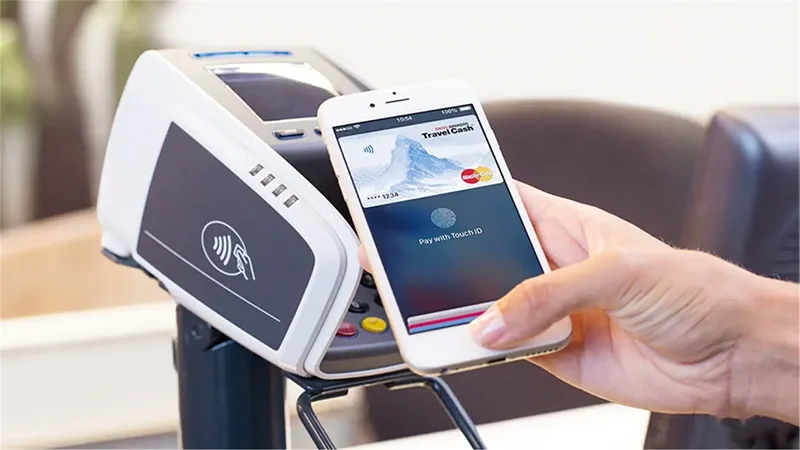
The NFC refers to a standard jointly invented by Nokia, Philips, and Sony, and is standardized under ISO 18092, ECMA 340, and ETSI TS 102 190. What’s more, it is compatible with the universally applied ISO 14443 Type-A, B, and Felica standard non-contact intelligent card infrastructures. The near-field communication standard specifies the modulation schemes, coding, transmission speed and frame formats of the Radio Frequency interfaces for Near Field Communication equipment, as well as the initialization schemes and conditions needed for data conflict controls in the initialization of active and passive Near Field Communication models. What’s more, it defines the transfer protocols covering protocol initiations and data conversion means.
Three modes of operation are supported for Near Field Communication Services.
Card Simulation Model
- The mobile station can be simulated as a normal non-contactless card such as mobile payment, mobile ticketing, identity recognition and so on.
- Application examples: Non-contactless mobile stations are able to be simulated as bank cards, access cards, electronic tickets and so on. Then the non-contactless mobile stations interact with any other terminals.
Reader Model
- The mobile station is able to read the contents on a contactless card or a non-contactless tag such as virtual bookmarks, advertisements and so on.
- Application cases: the electronic posters, in which a contactless mobile station interacts with a contactless module embedded in the poster, and the mobile station actively reads the corresponding data inside the card or tag.
Peer-to-peer communication mode
The two mobile stations are able to transfer data directly to each other within close proximity, such as synchronizing schedules, and games, as well as sharing transmitted contents, etc.
Application cases: Two contactless mobile stations can transfer or synchronize data with each other, such as pictures, music, ring tones, etc.
The strengths and drawbacks of the Near Field Communication technology
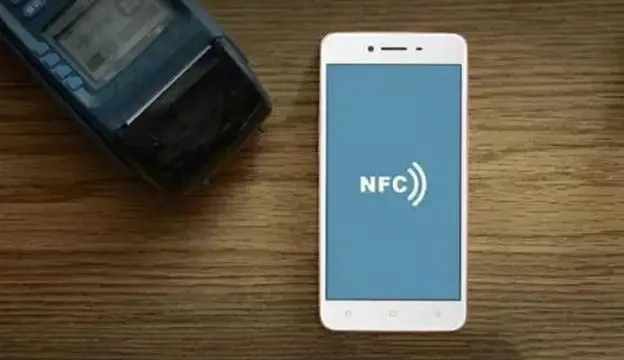
The strengths and drawbacks of the Near Field Communication technology
- Strengths: Compared with the traditional proximity communication payment, the Near Field Communication technology payment has the benefits of high security, fast connection setup, etc. You can use the payment within a distance of less than 10 cm, which can avoid mutual interference between devices. What’s more, its connection setup time is less than 0.1 seconds, which greatly ensures the security of user payments. Also, it is less costly.
- Drawback: the popularity of NFC requires the support of a large number of hardware devices, and the deployment of a large number of hardware devices by cell phone manufacturers and financial institutions is predicated on a large enough market. In addition, this payment method also faces issues. For example, whose standard will be used, what to do if the user’s phone is lost, and how to set the payment amount.
At present, the more popular two-dimensional code technology is also in a wide application and in a low cost. As long as you have a smartphone, you can read the relevant information from the two-dimensional code. However, the disadvantage is that it can only read the information in one direction with a slow reading speed. In addition, it requires accurate scanning from the scanner, and it requires a high location of the reader so the scanning effect will not be good if the machine is placed in a crowded place. For example, it takes a long time to scan the QR code. On the contrary, with the features of fast reading speed, and low requirements for reading locations, the Near Field Communication technology is also suitable for places with a lot of traffic. Also, it can not only read but also realize two-way information interaction.
The security of the NFC technology

The proximity wireless technology of Near Field Communication features fast, easy to use and secure, of which security is the most concerning feature of the payment industry.
It is well known that the account information of the traditional magnetic stripe bank card is stored in the magnetic stripe. When the bank card is used to achieve a transaction, the POS machine will be able to transact the amount, the account information of the bank card and the account password entered by the users. Then all the transacted information will be submitted to the bank servers to achieve the verifications. When the verification is passed then the bank back-end completes the deduction, and finally returns the transaction results.
Due to the easy-to-read and static nature of the magnetic stripe, it is easy to be copied directly, which leads to creating two cards with identical account information, so that the card of the user is swiped by others even without the card leaving his or her side.
When using NFC technology, the Near Field Communication chip allows dynamic two-way authentication with the POS. The data for each transaction is dynamically generated and the account information is stored through encryption and cannot be read directly. This solves several problems.
- The information in the Near Field Communication is not stored statically and cannot be copied by a cracker by reading it directly.
- Obtaining account information requires two-way authentication with the POS. Illegal devices don’t have these authentication keys, thus unable to obtain account information.
- Each transaction is created by a random number generator within the Near Field Communication chip to generate a temporary key. The communication data is valid for that time so even if Near Field Communication interaction data can be captured, it is unable to copy the transaction. It is also impossible to simply tamper with the amount to forge a transaction
As a result, the security of Near Field Communication doesn’t lie in the invisibility of the transaction data but in the fact that NFC brings energy to the smart card, allowing the entire transaction process to be generated dynamically as well as making it impossible to copy the bank card by simply reading it, thus ultimately achieving security.
Here takes an example of the authentication process of Mifare to give a further explanation:
- The Mifare card B sends a random number Rb;
- The reader A generates a random number Ra and encrypts Rb together and returns Token AB to the card;
- After the card receives the TokenAB, decode it and verify that the random number Rb in the ToakeAB is the same as that in step 1. Authentication fails if it is not the same.
- TokenBA; Card B encrypts the Ra just sent and transfers to the reader a value TokenBA.
- After reader A receives it, it decodes and verifies if the random number in TokenBA is the same as the one in Ra in step 2. If it is the same, the two-way authentication is successful.
When the card and the reader have an identical key, they can pass the authentication based on the above five stages. The key is not transmitted in clear texts during the authentication process so the security is greatly boosted.
The information mentioned above explains the security of the Near Field Communication card only from the perspective of the card copy. The password of the user should only be needed to ensure transaction security during the payment process.
7. NFC VS Bluetooth
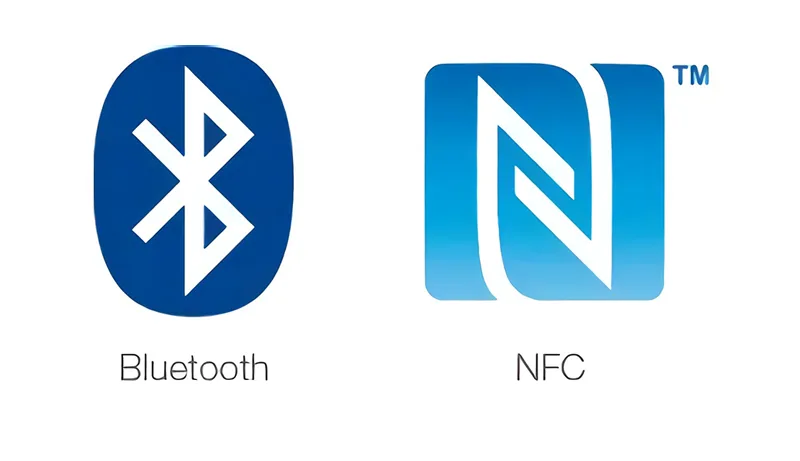
NFC, with the English full name of Near Field Communication, is commonly known as near field communication technology. As known by the name, it is a product of near-distance communication and a wireless technology initiated by Philips and jointly developed by Nokia, Sony and many other companies as well as manufacturers.
Bluetooth is the standard for proximity wireless data communication technology. It is capable of a single point to multi-point wireless data and sound transmission within a range of a 10-meter radius and with a data transmission bandwidth of up to 1Mbps. The communication medium refers to the electromagnetic wave with a frequency between 2.402GHz and 2.480GHz.
8. NFC VS RFID

The difference between Radio Frequency Identification and Near Field Communication:
- Operating frequency: Radio Frequency Identification has three operating frequencies, which are low frequency, high frequency (13.56MHz), and Ultra High Frequency. The Near Field Communication has only one operating frequency, which refers to 13.56MHZ.
- Operating distance: Both are short-range wireless communication technologies but Radio Frequency Identification includes three operating frequencies, and the working distance is a few centimeters to tens of meters. Theoretically, the working distance of Near Field Communication is ranging from 0 to 20 cm. However, most Near Field Communication items take use of special power suppression technologies, which results in their operating distance only ranging from 0 to 10 cm.
- Operating Model: The reader and non-contactless card in Radio Frequency Identification are independent of each other so they cannot switch models. At the same time, Near Field Communication is able to both support reading and writing models and card modes but also switch operating models.
- Peer-to-Peer communication: Radio Frequency Identification is unable to support peer-to-peer communication. However, it can set up peer-to-peer communication between different Bluetooth devices in a fast manner. Also, the Near Field Communication technology can achieve peer-to-peer communication.
- Standard protocol: The basic communication protocol of Near Field Communication can be completely compatible with the protocol of Radio Frequency Identification. Thus, Near Field Communication technology can also be applied in the application fields of High-Frequency Radio Frequency Identification.
- Application fields: Because of the compatibility of Near Field Communication technology with High-Frequency Radio Frequency Identification, Near Field Communication technology can be widely utilized. With lots of standards and complexity, Radio Frequency Identification can utilize corresponding technical standards in special fields or those industries with special requirements.
9. NFC VS WiFi
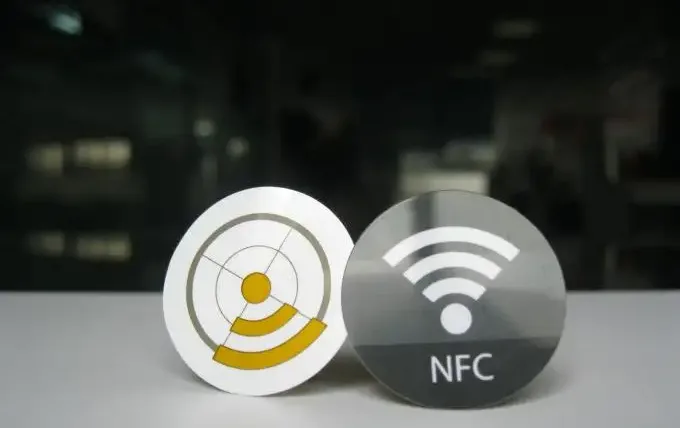
NFC stands for Near Field Communication, or Near Field Communication technology. Jointly invented by Philips and Sony, NFC is a contactless identified and interconnected technology that allows Near Field Communication to be achieved between two mobile equipment, user electronics, Personal Computers and intelligent control appliances. The Near Field Communication technology offers a simple as well as a touch-based plan that enables users to converse information and access content as well as different services in a simple and intuitive way.
Wi-Fi refers to a technology that enables the terminal including personal computers and handheld equipment (e.g., PDAs, cell phones), to be connected to each other in the wireless method. Wi-Fi stands for a brand name for wireless networking communication technologies, which is owned by the WiFi Alliance. The purpose is to enhance interconnectivity between wireless network items according to the IEEE 802.11 standard. Currently, people generally mix Wi-Fi with the IEEE 802.11 and even think that Wi-Fi is equivalent to the wireless Internet.
10. The History of the development of the Near Field Communication technology
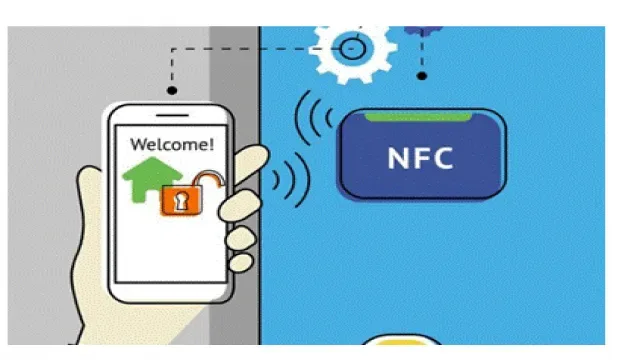
Philips Semiconductor and Sony were planning to develop a wireless communication technology that is compatible with contactless card technology in 2003. Philips dispatched a team of members to Japan to cooperate with the engineers from Sony for 3 months, and then jointly launched a wireless communication technology that was compatible with the existing ISO14443 non-contact card agreement, which is called NFC (Near Field Communication).
The specification defines a wireless communication method between two Near Field Communication devices based on the 13.56 MHz frequency. When talking about Near Field Communication, there are no readers, no cards but only the Near Field Communication devices. The specification defines two models of communication between Near Field Communication devices: the active mode and the passive mode. What’s more, it defines the choice of the two models and Radio Frequency field anti-collision methods, equipment anti-collision methods, as well as defines the different baud rate communication rate of the coding methods, modulation and demodulation method and other most underlying communication methods and protocols. To put it simply, the technology functions as solving the issue of how to exchange data streams.
The specification was eventually submitted to the ISO standards organization and the organization approved it as an official international standard, which is called ISO18092. And later it was put to be compatible with the ISO15693 to develop a new Near Field Communication global standard IP2 that refers to ISO 21481. Meanwhile, the ECMA (European Computer Manufacturers Association) also promulgated standards for Near Field Communication, which include ECMA340 and ECMA352. And the corresponding standards refer to ISO18092[2] and ISO21481. As a matter of fact, the contents of the 2 standards are very much the same but ECMA is not charged for use, and can also be downloaded from the Internet. However, the ISO standard needs to be charged. Luckily, to promote standardization, both ISO/IEC 18092:2013 as well as ISO/IEC 21481:2012 versions are available for non-charge electronic downloads on the official International Standard Organization website.
In order to accelerate the growth of the Near Field Communication industry, Philips, Sony and Nokia jointly initiated the setup of the Near Field Communication Forum, which aimed to promote the growth of the industrial application and give definition to the related medium layer specification for Near Field Communication -based application such as several data conversion communication protocols NDEF as well as several Near Field Communication tag specifications based on the non-contact tag. The latter is primarily involved with the meaning of the internal data structures of the card and how to recognize a standard Near Field Communication Forum-compatible tag, how to diversify specific applied data and other related specifications. The purpose is to enable the interconnection between different NFC devices. For instance, how can distinctive cell phones change data, how to recognize identical electronic posters, etc.





















